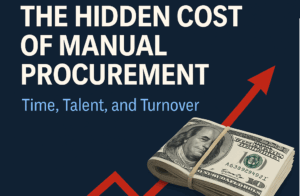In the complex and dynamic world of supply chain management, effective leadership is paramount to navigating challenges, driving innovation, and achieving operational excellence. Leadership presence, a combination of confidence, authenticity, and influence, plays a crucial role in guiding teams and organizations toward success. In the realm of supply chain, where intricate processes and diverse stakeholders converge, cultivating a strong and authentic leadership style is not just desirable – it is essential.
The Essence of Leadership Presence
Leadership presence extends beyond traditional management skills. It encompasses the ability to inspire, communicate, and build trust with stakeholders at all levels. A supply chain leader with a strong leadership presence commands respect, instills confidence, and guides teams through uncertainty with clarity and conviction.
Key Elements of Leadership Presence in Supply Chain
1. Clarity of Vision and Purpose
Clarity of Vision and Purpose A supply chain leader should articulate a clear and compelling vision for the future. This vision should align with the organization’s goals and values, providing a sense of purpose that inspires teams to work collaboratively toward shared objectives. For instance, Amazon’s supply chain leadership is centered around customer obsession and operational efficiency, enabling the company to maintain its global logistics dominance. Amazon’s ability to forecast demand, optimize its fulfillment network, and invest in cutting-edge technology such as robotics and AI-driven analytics underscores the importance of a well-defined vision.
2. Effective Communication
Clarity of Vision and Purpose A supply chain leader should articulate a clear and compelling vision for the future. This vision should align with the organization’s goals and values, providing a sense of purpose that inspires teams to work collaboratively toward shared objectives. For instance, Amazon’s supply chain leadership is centered around customer obsession and operational efficiency, enabling the company to maintain its global logistics dominance. Amazon’s ability to forecast demand, optimize its fulfillment network, and invest in cutting-edge technology such as robotics and AI-driven analytics underscores the importance of a well-defined vision.
3. Confidence and Resilience
Confidence and Resilience Leaders must exude confidence and resilience, especially in the face of challenges. Demonstrating composure under pressure and a willingness to tackle obstacles head-on inspires confidence in the team’s ability to overcome adversity. During the COVID-19 pandemic, supply chain leaders at Pfizer and Moderna had to navigate unprecedented challenges in vaccine distribution, showcasing resilience and decisive leadership. They collaborated with governments and logistics partners like FedEx and UPS to execute a complex, time-sensitive distribution plan. A 2022 survey by the Association for Supply Chain Management (ASCM) found that 78% of supply chain professionals believe resilience is the most critical leadership trait in times of crisis.
4. Empathy and Emotional Intelligence
Empathy and Emotional Intelligence Supply chain leaders with strong leadership presence understand the needs and concerns of their teams and stakeholders. They demonstrate empathy, recognizing the importance of balancing business objectives with the well-being of individuals. Research by Harvard Business Review found that emotionally intelligent leaders drive 20% higher employee engagement and performance levels. Companies like Unilever have prioritized employee well-being and supplier relationships, understanding that an empathetic approach leads to higher efficiency, lower turnover, and stronger supplier collaboration. In 2023, Unilever reported a 15% improvement in supplier performance due to enhanced engagement and support initiatives.
5. Adaptability and Continuous Learning
Adaptability and Continuous Learning The supply chain landscape is ever-evolving. Leaders with a strong presence are adaptable and open to learning. They embrace change, encourage innovation, and foster a culture of continuous improvement. Tesla’s supply chain approach exemplifies adaptability, as the company constantly refines its production and logistics strategies to improve efficiency and meet demand. In 2021, Tesla navigated the global semiconductor shortage by swiftly rewriting software to accommodate alternative chips, ensuring uninterrupted production. This proactive adaptation underscored the power of continuous learning in supply chain leadership.
6. Collaboration and Team Building
Collaboration and Team Building Effective leadership presence hinges on the ability to build and nurture high-performing teams. Supply chain leaders foster a collaborative environment that encourages diverse perspectives and leverages the strengths of each team member. Procter & Gamble’s supply chain success is attributed to cross-functional collaboration, ensuring streamlined operations across its global network. In a 2023 report by the Supply Chain Management Review, 85% of high-performing organizations cited cross-functional teamwork as a key driver of supply chain efficiency, reinforcing the necessity of fostering strong, cohesive teams.
7. Integrity and Authenticity
Integrity and Authenticity Authenticity is a hallmark of strong leadership presence. Leaders who act with integrity, honesty, and transparency build trust and credibility, both within their teams and across the supply chain. A 2021 Deloitte survey found that 85% of employees value transparency in leadership, emphasizing its role in fostering a positive work culture. Patagonia, known for its ethical supply chain practices, exemplifies integrity by maintaining stringent environmental and labor standards. Their commitment to fair trade and sustainability has not only strengthened brand loyalty but also set a benchmark for ethical leadership in the industry.
8. Strategic Thinking and Decision-Making
Strategic Thinking and Decision-Making Supply chain leaders with a strong presence possess strategic thinking skills. They analyze complex situations, make informed decisions, and align actions with the broader organizational strategy. Walmart’s supply chain success stems from strategic decision-making, leveraging data analytics to optimize inventory management and logistics. Walmart’s use of RFID technology and real-time data analytics has reduced stockouts by 16%, improving supply chain efficiency. Similarly, Apple’s supply chain leadership hinges on meticulous supplier relationships and demand forecasting, ensuring seamless product launches and global distribution.
Cultivating Leadership Presence
Developing a strong and authentic leadership presence requires a conscious effort and deep self-awareness. In the context of supply chain management, where the ability to navigate uncertainty, manage complex logistics, and lead diverse teams is critical, honing leadership presence is not just a personal asset but a professional necessity.
One of the foundational elements of leadership presence is a commitment to continuous personal and professional development. Leaders who actively seek to improve themselves through executive training programs, industry conferences, and real-world case studies position themselves ahead of the curve. According to a study by the Center for Creative Leadership, 86% of high-performing companies invest in leadership development programs, reinforcing the direct link between leadership training and organizational success. Supply chain executives at companies like Amazon and DHL regularly undergo leadership training to stay adept in an industry that constantly evolves with technological advancements and shifting global trade policies.
Leading by example is another essential component of leadership presence. Employees look to their leaders for guidance, particularly in high-stress situations such as supply chain disruptions. When COVID-19 led to unprecedented supply chain bottlenecks, leaders at companies like Ford and General Motors demonstrated strong leadership presence by transparently communicating with employees, adapting production lines, and collaborating with suppliers to mitigate losses. Their ability to remain composed and decisive during a crisis helped maintain operational stability and workforce morale.
Building meaningful relationships is equally crucial. In an industry where supply chains span multiple geographies and cultures, establishing strong connections with suppliers, logistics partners, and internal teams fosters collaboration and trust. For example, Unilever’s sustainable sourcing initiative is driven by leaders who prioritize supplier relationships, ensuring ethical practices and operational efficiency while maintaining long-term partnerships.
Embracing challenges as opportunities for growth is a hallmark of effective leaders. The semiconductor shortage in recent years forced companies like Apple and Toyota to rethink procurement strategies and optimize production. Leaders in these organizations displayed resilience by diversifying suppliers, investing in alternative materials, and fostering innovation within their teams. Their ability to adapt and lead during a crisis exemplifies strong leadership presence.
Active listening is another key element of leadership presence. Leaders who listen attentively to employees and stakeholders create an environment of trust and collaboration. A Gallup study found that employees who feel heard are 4.6 times more likely to perform their best work. By understanding concerns and leveraging input from teams, supply chain leaders can make more informed and strategic decisions that benefit the entire operation.
Communication is a powerful tool that differentiates effective leaders from ineffective ones. Leaders who articulate their vision with clarity and conviction inspire teams to align with organizational goals. During the expansion of Tesla’s Gigafactories, Elon Musk’s clear and ambitious communication strategy played a pivotal role in securing investor confidence, rallying employees, and accelerating the company’s production capabilities.
Seeking mentorship and feedback is another strategy that strengthens leadership presence. Industry leaders often attribute their success to mentorship and constructive criticism that helped shape their leadership styles. Satya Nadella, CEO of Microsoft, has frequently credited mentorship as a key factor in his transformation of Microsoft’s corporate culture. In the supply chain space, mentorship programs at companies like Procter & Gamble and UPS ensure that emerging leaders gain the insights and guidance necessary to navigate complex challenges effectively.
Finally, reflection and adaptability are critical in sustaining leadership presence. The most effective leaders regularly evaluate their approaches, adjusting their strategies based on new challenges and lessons learned. A McKinsey report found that organizations with agile leadership structures are 1.5 times more likely to outperform competitors. Supply chain leaders who embrace a mindset of continuous improvement position themselves and their teams for long-term success.
By integrating these elements into daily practice, supply chain leaders can cultivate a compelling leadership presence that not only drives operational success but also fosters a resilient and innovative work culture. Leadership in supply chain management is not just about managing processes—it is about inspiring people, building trust, and navigating complexity with confidence and clarity.
Conclusion
In the supply chain arena, where collaboration, adaptability, and effective communication are paramount, leadership presence serves as a guiding light. A supply chain leader with a strong and authentic leadership presence not only steers their team through challenges but also shapes the culture of the entire supply chain ecosystem. By embodying traits such as clarity, empathy, and strategic thinking, supply chain leaders can develop a powerful presence that inspires teams, fosters innovation, and paves the way for sustainable success in an ever-evolving industry.
The Perfect Planner Team is here if you have any questions about Leadership Presence in Supply Chain, and we offer a free consultation service. If you would like to connect with us on this article or any other topic, please message us on LinkedIn, shoot us an email at info@perfectplanner.io, visit our website at www.perfectplanner.io, or give us a call at 423.458.2979.
Author: Ed Danielov
Publication Date: February 20, 2025
© Copyright 2025 Perfect Planner LLC. All rights reserved.
References
- Association for Supply Chain Management (2022). The role of resilience in supply chain leadership. Retrieved from www.ascm.org
- Center for Creative Leadership (n.d.). Leadership development and organizational success: A statistical analysis. Retrieved from www.ccl.org
- Deloitte (2021). The importance of transparency in leadership: A survey on employee trust. Retrieved from www.deloitte.com
- Gallup (n.d.). The impact of employee voice on workplace performance. Retrieved from www.gallup.com
- Harvard Business Review (n.d.). Emotional intelligence in leadership: The key to higher engagement and performance. Retrieved from www.hbr.org
- McKinsey & Company (n.d.). Agile leadership and its impact on corporate performance. Retrieved from www.mckinsey.com
- Supply Chain Management Review (2023). Cross-functional collaboration and supply chain efficiency: A global survey. Retrieved from www.scmr.com






